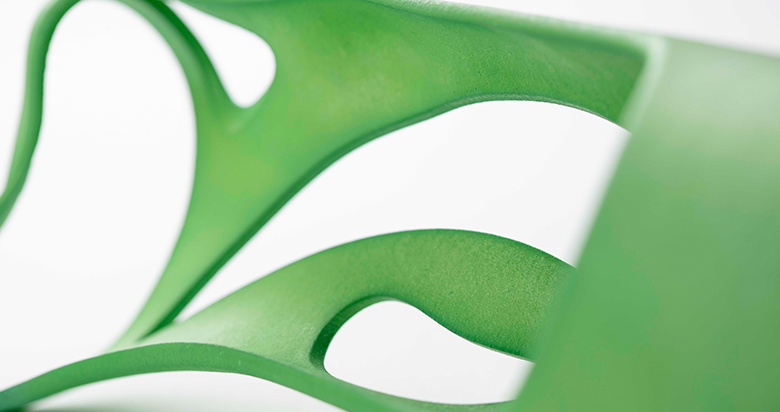Practical information
| Standard delivery time | 10 business days |
| Tolerance levels | Standard: ±0.4mm or 0.4% |
| Minimum wall thickness | 1.5mm |
| Colors | Standard: black impregnated |
| Note | When 3D printing, avoid long, thin walls. In the construction direction (Z), the tolerance is usually greater and holes always show some degree of unroundness due to the process. You can read more guidelines here. |
Datasheet
| Condition | Value | Unit | |
|---|---|---|---|
| Tensile modulus | ISO 527 | 1800 ± 150 | N/mm2 |
| Tensile strength | ISO 527 | 54 ± 3 | N/mm2 |
| Elongation at break | ISO 527 | 31 ± 5 | % |
| Flexural modulus | ISO 178 | 1800 ± 130 | N/mm2 |
| Charpy-Impact strength | ISO 178 | 198 ± 3.8 | kJ/m2 |
| Charpy-Notched impact strength | ISO 178 | 8.3 ± 0.3 | kJ/m2 |
| Izod-Impact strength | ISO 180 | no break | |
| Izod-Notched strength | ISO 180 | 5.1 ± 0.4 | kJ/m2 |
| Vicat softening temperature | ISO 306 | B/50: 177 A/50: 191 | ℃ |
Datasheet
| Bio-compability | ISO 10993-5, ISO 10993-10 |
| Food-approval | EC 10/2011, EC1935/2004 |
More technology?
Have you looked at our materials yet?

Still not convinced?
Perhaps 3D printing has not been used for production as long as turning, milling or injection molding. As an engineer, you don’t really have a “feel” with printed parts yet. Don’t know how 3D printed products hold up in your machines. And we understand that!
So: do you have a 3D printing application in mind? Just want to mount a 3D printed part in your machine to try it out? Have a part made to see if it will indeed stay whole? If so, contact Neil for a free sample. Round of business!
